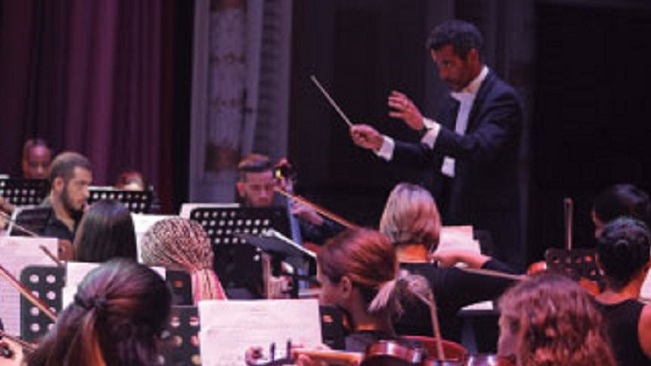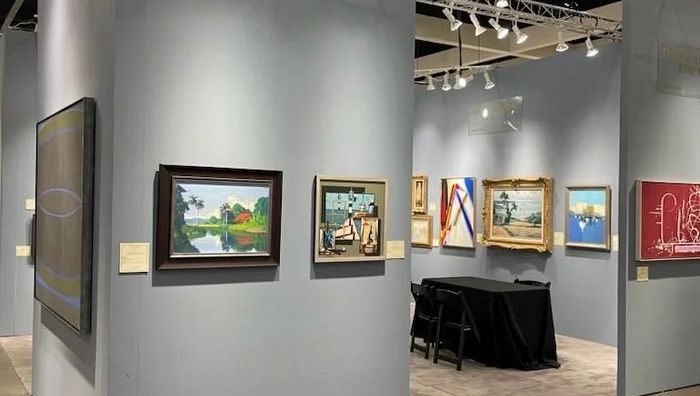Over thirty books have been written about Alfredo Jaar (Chile, 1956). Outstanding thinkers from around the globe have churned out brilliant texts on the most recognized Chilean artist worldwide. Some of those boldface names include Georges Didi-Huberman, Jacques Ranciére, David Levi-Strauss, Gianni Vattimo and –inside Chile– Adriana Valdes. One of the latest contributions made by this remarkable art and literary critic is the catalog of the great exhibition that brought him back to his homeland, from where he’d left for New York back in 1981. Jaar. SCL 2006 is up to par with the name-like endeavor that gathered works from different periods at the Fundación Telefónica. In its nearly 300 pages, the book provides an approach to his work, featuring photographs from 1979 to date, and the voices of new local theoreticians who rub elbows with the academician: Ana Maria Risco, Rodrigo Zuñiga, Sandra Accatino, Bruno Cuneo and Pablo Chiuminatto.
Extraordinary and outstanding are no doubt two good adjectives to label each and every piece of this bibliography of knowledge and reflection of a key work, an eminently contemporary work as it takes on different format and spaces in a crossover between ethics and esthetics, where photography, image problems and its representation, the critique of power and today’s geopolitical orders could be topics to address. However, does any other book manage to capture the character of the artist, the architect and the filmmaker all at the same time, including features of his own history and such intimate issues as, for instance, his paradoxical relationship with Chile?
Elisa Cardenas is the author of Alfredo Jaar. Screams and Whispers, the first book on the artist that, regardless of cross-references and its hybrid style, stands on journalism grounds and revolves on a number of interviews made by the journalist with the artist in 2005 in his New York studio. Banking on a level of specialization that allows for the enhancement of the informational horizon from the chronicle to the review, let alone a delicate analysis, the 140 pages of fluent narration does not ward off a more intimate tone from the voice of Jaar himself.
The book “does not stand as a bibliography, but rather as a tool to spread information,” writes the author, a woman with a 15-year career in Chile’s cultural journalism. In fact, the volume is thought from the onset as “a journalistic-cultural product that could showcase Jaar’s work in a more open and democratic way before the eyes of the national public,” including the value-added supplement of focusing on the local scene.
Chile’s contemporary art scene has been marked by a tremendous creative restlessness, by a high level of critique and theorization. However, it’s also been littered with institutional voids, an elite-oriented approach, a kind of cultural journalism handled primarily by market criteria and showbiz notions. Most of the countless catalogs and books published on national works and artists boast narcissist goals rather than academic objectives. There are no quality magazines or publication on Chilean art going into the hands of the uninitiated public, so the only chance of having access to massive information is a sporadic report in the late-night news, in the many billboards out there or in some informative articles that ought to be in sync with the showbiz headlines. In the face of this major misinformation, there’s no such thing as art reviews that touch on crucial issues or encourage public debates.
In this context, Jaar’s presence has remained isolated in the developments around that 2006 flashback exhibit, one of the most visited expositions in recent years that made the artist reach a milestone in Chile after more than 20 years of oblivion, without any institution or private group keen to bring him back.
Three years after the exhibition, what does the Chilean public know about one of the most outstanding artists of the international contemporary scene?
The book was named after one of Jaar’s artworks, in turn inspired in a Bergman movie –one of his favorite film directors. Screams and Whispers reaches out to the spirit that leads his works, “many times setting a tone of denunciation and many times combining those critical and politically determinant discourses in delicate, synthetic and nearly whispering formats and visual approaches,” the journalist writes.
The volume features images provided by Jaar himself, who remained on all toes during the making of the book. Through nine chapters –the order is not chronological, but thematic– underscore the fundamental aspects of his work, according to the author herself: his beginning in New York, his working style, the idea of public intervention, the importance of Africa in his poetic message, photography and the problem of image, his return to filmmaking with the movie Muxima (2005), his incursions in the Net Art through virtual installations, his form of cultural resistance and his relationship with Chile.
Elisa Cardenas quotes both the author and theoretical texts, and sometimes she turns to parallel interviews. She uses photography to tour his works and resorts to her own narration to configure a visual and analytical approach to those works –some of them so very hard to cotton on to from just a single image because they stand for experiences in which different periods, urban locations and even the action of the spectators have been involved. In the same breath, the text broaches some biographical moments from his childhood all the way to his last visits to Chile, memories of his early stage as an artist in a country ruled at the time by a dictatorship, his isolation within the then fledgling neo avant-gardism, his insertion in the New York scene and from there onto the world scenario. She sketches out the music lover and compulsive reader, the movie and poetry enthusiast who collaborates with big-time intellectuals from around the world, especially those standing on the sidelines. She also depicts his situation in the world, his conditions as a globalized artist who lives out of a suitcase, acclaimed by institutions, museums and colleges. And she suddenly takes us into the atmosphere of hard work and sophistication his spacious workshop in Chelsea is shrouded by.
Through a number of signals, Elisa Cardenas highlights the artist’s staunch methodology; the new art concepts his work addresses; his critical attitude of art, market and sociopolitical systems; his relationship with reality, pointing at the paradoxes of a planet riddled with images and information, the role played by intellectuals and artists in that context, and all this much is aimed at showcasing time and again the direction of creation that stands on the cracks of the contemporary order and reveals everything we just don’t see, no matter how hard we look around. She underlines the commitment, the poetry, the beauty, the relationship with the image. The book lets us take a closer look at the kind of reality the mass media either screen off or spruce up, the one Jaar delves into without shunning those who are critical of his work and label it as “some sort of stylization of the human sorrow.” For the artist, it’s all about taking on Marcel Duchamp’s revolutionary gesture that “opened the road to thinking, to perception, to the ideas that can support the art, not just only the visual approach.” The author writes, “Beauty, in fact, sticks its head out every so often, bringing with it reflection on some sort of mystery, a beam of light even in the realm of misery… The visual testimony steps onto the boundaries of art and is enunciated from there.”
Alfredo Jaar. Screams and Whispers is a contribution to cultural journalism, and the author insists, “A genre with so little space in the national media, despite the fact that many of our great writers developed this area in different newspapers and magazines of their time.” Elisa Cardenas sees in Jaar:
an artist, with some neo-conceptual-trended works, who yet manages to seduce and capture the attention of the ordinary public, in addition to dealing with topics that exert an influence of their own on the whole. Those characteristics shed significant light on an approach that hinges on well-informed cultural journalism, with a language within everybody’s reach.
Moreover, the contribution is contextualized in the movement of contemporary art galleries generated in recent years around the Santiago’s downtown area and in the upscale circuits that brought along somewhat traditional criteria back in the 1990s. As a matter of fact, the book was launched by the Contrapunto publishing house as part of the Ch.ACO, the first contemporary art fair held in Chile that took place in early October, 1990, in that same city. In that event, some of the halls made Jaar a sort of shoo-in bet on the collection of new trend art –something they were trying to give a lot of media hype to. At least a couple of galleries (Florencia Loewenthal and Animal) show off some of the artist’s artworks, a decision that bears out not only the interest in lifting him off the back burner, but also in making a bestselling artist. And that’s no doubt quite a sea change in the local scene, where such world-class creators as Roberto Matta, Claudio Bravo and Guillermo Muñoz Vera –a surrealist and two hyperrealists– were on high demand. The public accepted the move and Jaar became one of the most coveted artists.
Furthermore, the book is a self-management work that tuned in with Contrapunto’s interest in fostering local art publications. Both the research study and the end result were bankrolled by FONDART (Spanish acronym for Art Development Fund), whose research line on the visual arts makes it, together with The Book Fund, the only institution supportive of independent publications. As long as the economic domains and the journalistic conglomerates do not understand the need to keep the restless public posted and be a part of it, Alfredo Jaar. Screams and Whispers will remain as evidence of something that’s ready to jump out of the misinformation system we are all subjected to and that, in keeping with Jaar’s work, is about to lay bare the powers that keep us hoodwinked.
Alfredo Jaar. Screams and Whispers: Elisa Cardenas, Contrapunto Publishing House, Santiago de Chile, 2009.

Previous publication A Galician in The Caribbean
Next publication RODRIGO MOYA: THE INSURRECTIONAL IMAGE
Related Publications

How Harumi Yamaguchi invented the modern woman in Japan
March 16, 2022
Giovanni Duarte and an orchestra capable of everything
August 26, 2020











